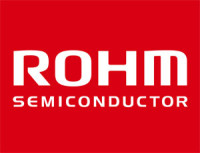Advanced In-Car Displays
November 23, 2022
on
on
Elektor’s Brian Tristam Williams talks to Stefan Drouzas, ROHM Semiconductor Europe’s Senior Application Marketing Manager about the range of solutions, such as moving to zonal architecture and their SerDes serializer-deserializer components, which ROHM brings to intelligent vehicle cockpit displays that help the car talk to the driver more intelligently, save resources, and ensure safety.
Over 40 years ago, cars used physical analog displays, such as needle-based temperature gauges, revolution counters, and fuel level displays. Then came LEDs, and the first electronic GPS navigation systems over 30 years ago. Nowadays, LCDs are common in mid-to-high-range vehicles, with some using electronic displays exclusively, for everything from speed and temperature to watching video, controlling the entertainment system, and fault indication.
Compared with a 1982 model with zero digital electronics, a 2022 vehicle has an incredible amount of digital complexity, with communication running all around the vehicle, from head to tail. This communication began with a distributed architecture, and has moved to a domain computing architecture. In the 2020s, zonal architecture is being seen more and more, and to manage that, powerful ICs are needed.
ROHM has taken that challenge head-on, developing a wide range of ICs to support every aspect of digital in-vehicle displays, enabling higher resolution (and thus higher bandwidth), multiple cameras, instant response, and displays throughout the vehicle, including on surfaces that were never traditionally used to communicate with the vehicle’s occupants.
Paramount in all this is safety, and ROHM has introduced a number of failsafes to ensure autonomy of vehicle safety systems when other components fail. Be it a frozen display or a cable break, the vehicle must not let you down safety-wise.
Stefan Drouzas talks about the latest innovations from a market leader in automotive display technology, and the trends for the next few years.
Over 40 years ago, cars used physical analog displays, such as needle-based temperature gauges, revolution counters, and fuel level displays. Then came LEDs, and the first electronic GPS navigation systems over 30 years ago. Nowadays, LCDs are common in mid-to-high-range vehicles, with some using electronic displays exclusively, for everything from speed and temperature to watching video, controlling the entertainment system, and fault indication.
Compared with a 1982 model with zero digital electronics, a 2022 vehicle has an incredible amount of digital complexity, with communication running all around the vehicle, from head to tail. This communication began with a distributed architecture, and has moved to a domain computing architecture. In the 2020s, zonal architecture is being seen more and more, and to manage that, powerful ICs are needed.
ROHM has taken that challenge head-on, developing a wide range of ICs to support every aspect of digital in-vehicle displays, enabling higher resolution (and thus higher bandwidth), multiple cameras, instant response, and displays throughout the vehicle, including on surfaces that were never traditionally used to communicate with the vehicle’s occupants.
Paramount in all this is safety, and ROHM has introduced a number of failsafes to ensure autonomy of vehicle safety systems when other components fail. Be it a frozen display or a cable break, the vehicle must not let you down safety-wise.
Stefan Drouzas talks about the latest innovations from a market leader in automotive display technology, and the trends for the next few years.
Read full article
Hide full article



Discussion (0 comments)